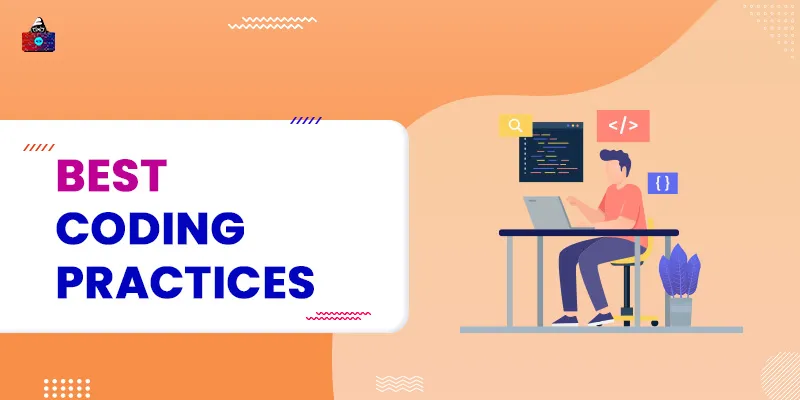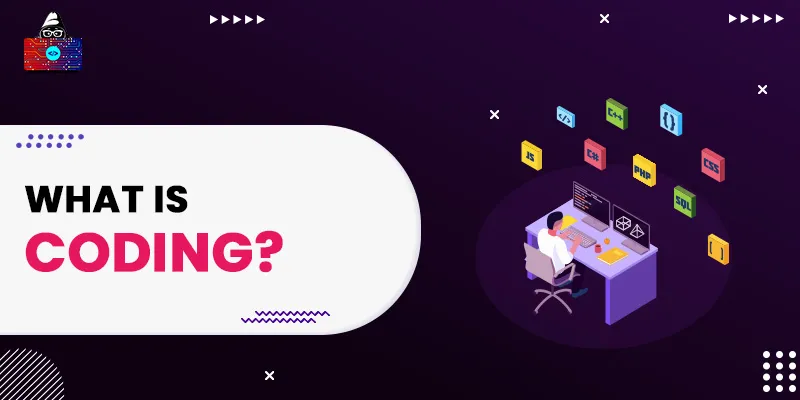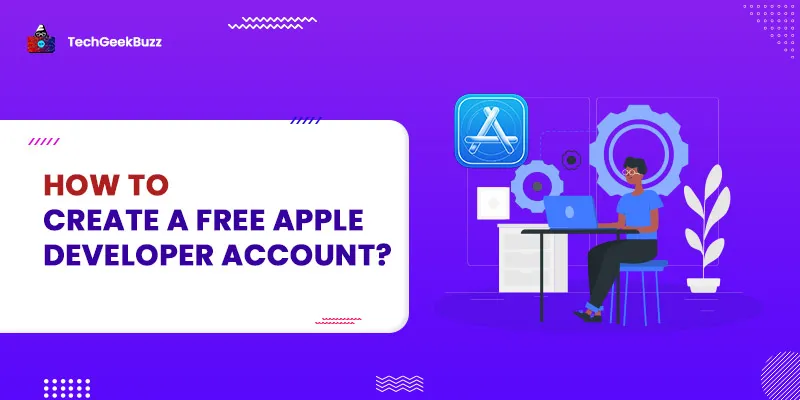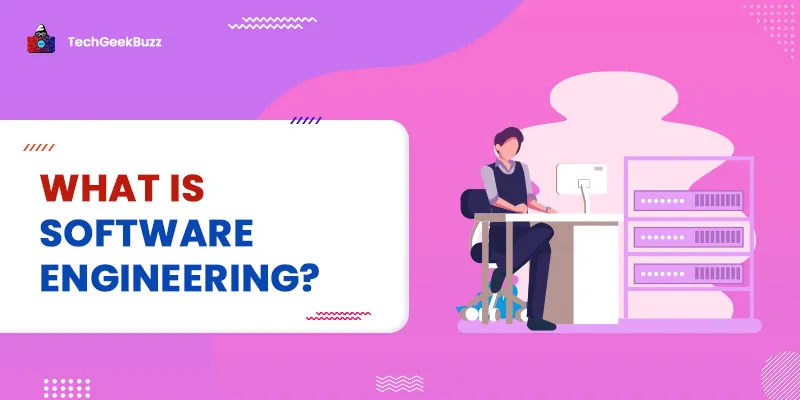Coding is the most considerable and crucial skill in the programming domain. It is the backbone of modern technology. Coding is among the most demanded skills not only in the IT domain but also in non-IT industries and businesses, as everyone today utilizes digital technology to carry out their operations.
Every electronic gadget - such as mobile phones, calculators, computers, and laptops - mobile software, websites, etc we use operates due to the code programmers write.
As businesses and companies are incorporating digital technology, professionals with coding expertise are in great demand today. Therefore, gaining coding skills in this era is beneficial for individuals to crack interviews who desire to acquire jobs in renowned companies.
Earlier, coding was recognized as an ability or mastery only for computer nerds and geeks. Today, it is considered a crucial expertise for several job profiles. Before we proceed to best coding practices, we shall first see what coding actually is.
What is Coding?
In simple terms, It is a means of communicating with computers. It is also called computer programming. Programmers write code that tells computers what to perform and how to behave.
A code involves multiple instructions that a computer needs to follow. Computers are not intelligent like humans (although they are picking up the pace with the power of AI ), but they obey all instructions directed by humans. As a result, they perform all tasks that you wish them to do.
15 Best Coding Practices to Follow | Coding Best Practices
In this agile world, developers experience a lot of pressure, as customers wish to have applications with multiple advanced features. Even experienced programmers or developers feel the pressure of developing reliable and fully featured applications.
Therefore, many programmers end up adopting shortcuts for building them but adopting such shortcuts results in subpar applications. Instead of following shortcuts, it is always better for developers to adopt some effective programming techniques that help them in building reliable and top-notch applications.
Below are the best coding practices to follow while developing any software product. These practices not only help developers build good applications but also cuts the use of resources, time, and effort.
1. Stick to the Style Guide
Adhering to a company’s coding style guide or a particular programming language’s style guide is one of the finest practices of coding. Each programming language has a unique style and structure. Therefore, the style guide of a programming language offers you complete information, such as where to use braces, how to use indentation in the code, and naming conventions.
It is always better to go through a programming language’s style guide that you are using for your project. Make sure to concentrate on rare requirements and always remember to implement the rules mentioned in the style guide. In addition, you should not take a shortcut while writing code in order to save time.
Sticking to a programming language’s style guide is not only beneficial for making the code more readable but also for other programmers to make sense of it. They can read your code more easily and, if required, can work on it.
In addition, this coding practice enables programmers to achieve consistency throughout their code. Finally, it becomes more accessible to you and other programmers to detect errors or bugs present in the code.
Many times, companies may modify a particular programming language’s style guide for attaining team efficiency. In addition, they can slightly change the style guide to match their business criteria. Such companies modify the style guide with intelligence and ensure that everyone on the team is aware of this modification.
The major question, however, that arises is how to identify whether the code is following the style guide or not. It is quite simple! A robust tool called Sider enables you to write the code according to the style guide.
The tool helps programmers to write code that is consistent and flawless in terms of style and structure. It verifies your code quality and checks whether the code violates the style.
2. Don’t Reinvent the Codebase
Not coding a program or reinventing the code may seem one of the not-so-smart coding practices, but it may be advantageous sometimes and help save you valuable time.
Before you proceed to frame a code for your project depending upon the specified requirements, there are some significant questions that you must focus on:
- Are all features included in a project necessary?
- Who can benefit from this project?
- Has anyone from my company or an open coding repository coded a similar program?
After thinking of the above questions, you may perceive that the code that you need is already developed or available at any open-source repository. In addition, you can even opt for a SaaS tool to get the required code and save time.
A majority of software developers invest 40% to 50% of their time developing the already available code . It would be, however, more beneficial if you would invest the time looking for the above options to get code readily and save your effort, cost, and time.
3. Develop Readable Code
Writing comprehensible code is one of the best coding practices to consider. If a programmer comes up with a well-optimized codebase that is not legible, it is of no use.
Many times, programmers or software developers demonstrate their expertise by writing a single function in one single line, however, in general, it is not a good practice to follow, as many people cannot understand it.
Readability is as significant as well-optimization for a project’s efficiency. The code that can be understood easily and integrated with other code(base) effortlessly is the one that is legible.
For large and complex projects, several software developers work together. As a result, the code written by one programmer has to be modified by the other one in the later stages of development. Therefore, if the code is good in terms of readability, the other programmer(s) can work on and extend it hassle-free.
PRO TIP
One of the easiest approaches to developing a legible code is to ask yourself these 2 questions:
- Will I be able to read or understand the code after a year or two?
- If a new developer joins your team, will they be able to understand the code?
4. Document and Comments
Comments play a pivotal role in developing any code. It is considered the most crucial practice to follow in programming.
Comments in programming are simple texts in the English language that tell more information about the source code or describe what the code is for. Even a common person can tell what the code is developed for after reading comments. Every programming language has some provision to add comments.
If you are commenting on a function, you must mention what it is for or how it behaves, what parameters are used, and what will be the output. In addition, you can even write about expected errors and a short summary of steps involved in a function.
PRO TIP
Below are the 2 most significant reasons to use comments while developing any source code:
- When working in any company, there is a development team that involves multiple developers. Using comments for different functions and methods in the source code can help other programmers understand the code.
- When you observe a code developed a year ago, you may not have a clear idea about the functions or logic used in it. Therefore, if you have used comments for each function or logic, you may understand it more quickly.
Documentation is as significant as using comments in programming. It is brief information about a particular software explaining how it works and how to utilize it. Additionally, it acts as a guide for people that describes what the source code of an application includes and what actions the code performs.
It helps programmers keep track of an application’s every facet. The principal objective of documentation is developing an application, its maintenance, and sharing information with other programmers.
Therefore, reading documentation and adding comments are the 2 most essential practices to be implemented while developing any application.
5. Follow the DRY Principle
Following the DRP principle while developing the source code is yet another best coding practice to execute. Here, DRY means Don’t Repeat Yourself . As its name suggests, you must remember not to repeat what you have worked on or avoid duplication. Andy Hunt and Dave Thomas developed the DRY principle.
DRY represents that every function or logic you develop should be unambiguous. Therefore, there should be no duplication. Alternatively, it states that you should not create the same code repeatedly, which, in turn, would result in wasting time and effort. Therefore, DRY is also known as DIE, where DIE implies Duplication Is Evil .
Most software applications are developed to perform repetitive actions. Therefore, if you write the same code - called boilerplate - repeatedly, you will waste your time. The finest way is to adopt the copy-paste-modify option. Select the code that you need to repeat, copy it, paste it to the desired class in the source code, and change the parameters or variables as required.
Additionally, you can save the most required piece of code in one place that can be beneficial for you in the future or can be used by other programmers. Doing this will help you preserve your time and energy.
6. Test the Code and Respond to Errors
Testing the developed code is an indispensable part of programming. Therefore, it is always better to test the code to verify that there are no defects or bugs. However, if you detect errors or bugs, it is your responsibility to fix them as soon as possible before deploying an application.
If you do not test the source code - at least once - the end-users may definitely experience issues someday while using an application. As a result, they may provide negative reviews and are not likely to use your application. Therefore, testing any software product before its deployment is mandatory and inevitable.
Gone were days when testers performed testing manually. But today, many automated tools are available for testing that have made software testing more accessible and manageable. Testing the code ensures that it functions as expected or specified in the requirements specification. In addition, all defects and bugs in the code are identified in the early phases.
Continuous testing during the development of an application helps programmers or developers detect issues and make changes wherever required. Therefore, testing the code and fixing issues is an unforgettable and the most major coding practice to follow.
7. Restrict the Line Length
You might have experienced circumstances where you need to read a long blog, news, or lengthy article. Most people hate reading long lines or texts. People mostly love consuming short and crisp content. Therefore, one of the best programming practices to implement while developing the code is restricting the number of characters in a single line.
If a single line of code consists of multiple characters, it may look fishy and messy. In addition, many other programmers may find it challenging to read and understand. However, if reading from a terminal window, the ideal character length of a line is 8 characters.
Another code practice to execute while creating the source code is dividing the entire code into smaller modules or units. Instead of searching for the specific function from the whole code, it becomes easier for you when you divide the source code into sections.
Moreover, ensure to split each function or method into an appropriate section to appear fully on a decent-sized window. In other words, ensure that each function consists of 20 to 25 lines. Otherwise, divide the function into 2 small units. Another important tip while dividing the code into digestible sections is to add comments before each function to make it more informative and readable.
8. Maintain Consistency
In English, there is a proverb that we often use; ‘Consistency is the key to success.’ The same applies while developing software. Therefore, maintaining consistency throughout the development process of software products is one of the approaches to follow.
Following the same procedure or steps throughout developing the code is maintaining consistency. Consistency is also defined as uniformity or similarity. For instance, when you create a function that resembles the existing one, you must use an equivalent or similar function name, the order of parameters used, and the code structure.
Another method of making the source code consistent is to follow name conventions. Think about naming your son Olivia or daughter as Williams or John. Weird right? We follow our culture. The same applies when it comes to coding. You must follow naming conventions.
PRO TIP
Below are the 3 significant points that help you maintain consistency in your code:
- According to the programming language’s style guide, stick to a snake case or a camel case while declaring variables.
- Name all related or closely matching functions, variables, and classes similarly to show relationships between them.
- Ensure to write the filename consistently.
9. Avoid Hard-Coding
Hard coding in software development implies inserting data into the source of code of an executable object or the main program. It is not a good practice to follow in programming because the inserted data is unchangeable and inflexible. Therefore, it is always better to avoid hard coding .
Hard-coded data involves unchangeable pieces of code, such as static elements, physical constants, and version numbers. The project’s source code gets changed when the format of the input data changes. Therefore, it is not possible for developers to create a dynamic user interface.
Some source code elements, such as passwords, usernames, system-level settings, and other configuration data, should not be hard coded. Below are some scenarios where developers should avoid hard coding:
- While creating a theme.
- When changing the site theme.
- Building a function to retrieve and display the data.
- When the other programmer starts working on your project.
Along with avoiding hard coding, one must also avoid security pitfalls. It is important to observe issues, like buffer overflows and cross-site scripting, based on your chosen programming language. In addition, you must be aware of all the possible risks incorporated in hardcoding and try to avoid them.
10. Code with a Fresh Mind
Coding for a long time may seem a boring and daunting task. However, most developers or programmers spend their days and nights performing coding. But it is not always the case that coding for long hours may end up in a better code. Therefore, one of the best coding practices to follow is to build the code with a fresh and clear mind.
Many studies in the past have proved that people working with fresh minds are 2 to 3 times faster and more efficient than people working for a longer time. In addition, programmers or developers with low energy and tired minds may often make mistakes, which, in turn, would result in errors or bugs.
If there are errors or bugs in the code, the Quality Assurance team has to detect them before deploying an application to end users.
Therefore, it is always better to work with full energy and the utmost attention. You must ensure that you take some short breaks in a day, have coffee, or do activities that may help you freshen up. Moreover, you can have casual talks with your friends or team members but make sure not to miss the deadline and avoid working when exhausted.
11. Keep it Straightforward
Maintaining the code simple and straightforward is another major best coding practice to consider. Maintaining the code simple and easy is as crucial as developing readable code. It is considered that complex code is likely to incorporate more bugs and defects. In addition, it is also important to concentrate on an application’s design, meeting the expectations of stakeholders or end-users.
To make your code easy and simple, you must ensure not to incorporate outdated interfaces, parameterized classes, and factory methods, however, an effective approach, called SIMPLE, helps you develop and maintain your code simply and easily. SIMPLE is an acronym, where each letter in it represents an action, as follows:
- S : Strong data types.
- I : Immutability, restricting mutability wherever possible.
- M : Misuse-proof APIs, avoid using interfaces in the wrong approach.
- P : Pure code or functions, determining results using their arguments only.
- L : Lean elements, keeping all components of a software product small and focused.
- E : Expressive bugs, helpful error messages.
In many situations, developers add a piece of code to avoid some uncovered or non-existing errors but it is not a good practice, as this additional code can confuse other programmers and make it more complex. If in the future, errors arise, you can modify the code to fix them. Until then, try to keep your code simple.
12. Use Descriptive Naming Conventions
Earlier, there were several limitations on naming conventions. Still, today, developers have to follow a few of these limitations on naming conventions. You should be descriptive while using naming conventions, which may help readers and avoid confusion.
Using long and descriptive names in the source code helps your team members and also you in the future acknowledge what exactly it is.
Of course, you can even use short names in your code, but it may be challenging to recollect it after a month or two. Moreover, if any new developer joins your team, they cannot understand short forms. Therefore, using descriptive naming conventions is always the best coding approach.
For instance, consider there is a function that finds the best or lowest price of an item. If you use ‘getLowest,’ it would seem to be confusing and unclear. So instead, you can use ‘getLowestPrice’ or ‘getBestPrice.’
Using such descriptive names will help other programmers understand what the function is and what it does. There are some practices for naming conventions, as follows:
- Use a noun for the type name and class name.
- Ensure to include a verb for a method or function name.
- If a function or method returns the result as ‘Yes’ or ‘No,’ add ‘Is’ as a suffix to its name.
- Start with ‘get’ if a function returns an object’s property.
- Use ‘set’ at the beginning for a function name if it sets an object’s property.
13. Build a Portable Code
Developing a portable code means it should be compatible with various frameworks and environments. Additionally, ensure to create a buildable code, i.e., you should be able to distribute the code.
To achieve code buildability, you can opt for automation tools that help you create code that can be distributable and quickly testable. Therefore, developing portable and buildable code is among the best programming practices.
14. Collaborate
The most vital and unavoidable coding practice to follow is to collaborate. When developing any application, you must keep in mind that you work in a team and are not alone. In addition, you must also remember that you are one of the team members and have a goal of delivering applications in the least amount of time as a team. As a result, working together is the best coding practice.
While working in a team, it is the responsibility of every team member to share the progress of software applications under development. In addition, the entire team should share their ideas and thoughts to develop better applications. When you communicate with others, you may receive alternate solutions to your problems. As a result, many new ideas may flourish.
Another advantage of working as a team is that if you are an experienced programmer, you may get an opportunity to mentor other junior team members. Conversely, if you are a fresher, you can receive a guide and learn many valuable coding skills from the senior members.
15. Version Control
Version control is the method of tracking the modifications made to an application’s source code. Thus, it is also referred to as source control. One of the best coding approaches is maintaining everything, such as test data, documentation, scripts, etc., under version control.
Furthermore, with version control, all team members can work on the same files parallelly If the new version of the system breaks or crashes, the version control stores the source code’s previous version. In addition, it helps you to understand why modifications are made to an application’s source code. Therefore, you can say that version control helps you manage the backup of the source code.
Modern tools, like GitHub, enable users to store all data or projects and access them anywhere, whenever required. Moreover, developers do not have to worry about data loss due to sudden battery drainage, power loss, or an application glitch with version control.
Conclusion
People love using software that offers a great user experience and is free from bugs and defects, however, the development team needs to implement best coding practices to develop such software products. This post contains popular and widely implemented coding techniques that help organizations develop and deliver top-notch software products.
A good and high-quality software product is one whose source code is readable, understandable, written using a consistent methodology, uses descriptive naming conventions, not incorporating hard coding, and testing it frequently to detect bugs and fix them as early as possible. In addition, maintaining the backup of your code is the most robust coding approach.
Finally, collaboration is a key element in every department of an organization. Having consistent communication between team members helps develop and deliver applications quicker and faster. In addition, adopting all the above coding practices helps organizations build defect-free, reliable, and highly secure applications.
People are also reading:





Leave a Comment on this Post